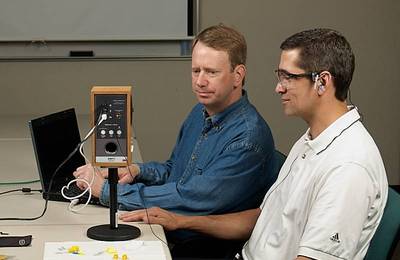Advances in fit test technology for hearing protectors
By Terry Gorman, Senior Occupational Hygienist, 3M Occupational Health & Environmental Safety Division
Thursday, 27 September, 2012
It has been shown that hearing protectors can provide a suitable level of protection to workers exposed to noise. However, to get appropriate performance from these devices, there are several elements that need to be addressed.
These elements are:
- Attenuation - what level of noise reduction is needed?
- Fit - is the product fitted correctly?
- Comfort - the product must be comfortable or it will not be worn!
- Compatibility - there may be other PPE (eg, safety eyewear, respirator) that also needs to be worn without degrading the protection level.
- Wear and tear - the product should be regularly inspected and maintained or replaced when degraded.
Australian Standard AS/NZS 1269.3 gives detailed guidance on these aspects. However, recent developments in technology have given us another way to view the attenuation and fit elements.
Currently, hearing protectors are tested for attenuation to AS/NZS 1270 by using a panel of 16-20 test subjects with normal hearing.
Each subject is exposed to sound at various frequencies and volumes to determine their threshold of hearing and then retested - this time with the hearing protector in place.

The difference between these signals (protected and unprotected) is the attenuation of the product. These results for the whole panel are then averaged to give an attenuation value called the SLC80.
This averaging step means some test subjects achieved a higher attenuation than the published SLC80 value, but some received a lower attenuation. In practice, this means a proportion of users will get lower attenuation than the published SLC80 rating and are therefore at risk of overexposure to noise.
This is not surprising - like shoes, we cannot expect one type/size of protector to perfectly fit everyone. Variations in the size and shape of the individual’s ear canal mean that some types and sizes of earplugs will not seal effectively and should not be used.
Recent advances in design and capability of miniature microphones and electronics now allow us to measure the attenuation given by a particular model or size of earplug for a specific individual.
Using an appropriate fit testing device, like 3M’s E-A-Rfit Validation System, we can now determine the Personal Attenuation Rating (PAR) for the individual and if this PAR is acceptable for their noise exposure. Rather than using the averaged SLC80 value, we can now see if Plug A gives enough attenuation for the noise exposure, or that perhaps Plug A does not fit well enough and using Plug B (or C, etc) does provide suitable protection.
Early indications are that a significant percentage of workers using earplugs currently do not achieve the SLC80 value and are therefore at risk of overexposure.
This new technology can assist in providing the worker with hearing protection that has been individually assessed for fit and attenuation.
For more information about the 3M E-A-Rfit Validation System, visit www.3m.com/au/ppesafety.
2024 Review of the Dust Diseases Scheme — final report
In New South Wales, the final report of the Standing Committee on Law and Justice's 2024...
Could this trial bring us closer to a viable silicosis treatment?
Researchers from The Alfred are embarking on a trial of a medication that, they believe, could...
The rising cost of extreme-temperature injuries
To understand the cost of worker exposure to heat and cold, Australian researchers have analysed...







